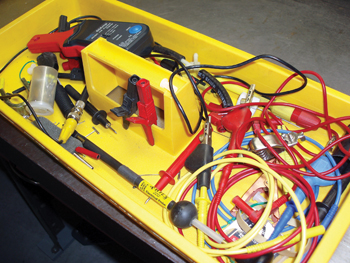 During the early 1960s I decided to continue my college education by enrolling at a community college in California. My psychology professor turned out to be a man in his late 30s who had spent World War II serving as a tail gunner in a B-26 bomber.
During the early 1960s I decided to continue my college education by enrolling at a community college in California. My psychology professor turned out to be a man in his late 30s who had spent World War II serving as a tail gunner in a B-26 bomber.
If you haven’t guessed, the tail gunner is the most exposed and most critical defensive position on a WWII bomber. And if you can imagine a young teenager suspended alone in the tail of an airplane flying 30,000 feet above the earth, waiting for the enemy to appear in his gun sights, you have a good picture of my old psychology professor.
Fortunately for me, my professor’s wartime experience encouraged him to teach psychology, not as an abstract science, but as a survival skill. He always emphasized how to psychologically deal with the bare-knuckle issues of life. Not that I’ve become an expert in human psychology, but I continue to keep all of those hard-learned survival skills in my mental toolbox.
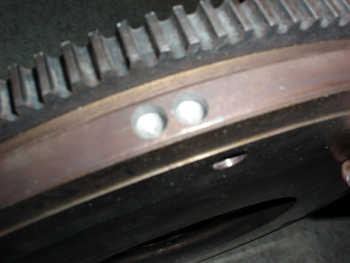 The Preparatory Set
The Preparatory Set
One of the first survival skills my professor taught is called “preparatory set,” which is simply the act of preparing to do something. Each of us engages in preparatory set when we open our toolboxes each morning. The very act of opening our toolbox signals to our mind that we’re ready to go to work and deal with the day’s issues.
Over the years, I’ve noticed that many techs don’t retain what has been presented in training classes. Part of the reason is that they lack preparatory set. The first requirement of preparatory set is to bring paper and pencil to class because the physical act of taking notes demands that we be mentally and physically engaged with the presentation.
The next requirement of preparatory set is to do our homework before attending the class. The homework for most diagnostic techs consists of keeping up with new developments in vehicle technology by reading the latest trade magazines and participating in professional Internet websites like the International Automobile Technicians Network (iATN).
For what it’s worth, one of the most important homework exercises I do is to maintain my ASE Certified Master Auto Technician and L-1 Advanced Engine Performance credentials. It’s odd to think of the ASE tests as homework, but I believe passing the ASE CMAT-L1 tests provides the preparatory set needed for learning advanced electronics diagnostics.
Intellectual Curiosity
Intellectual curiosity is obviously an essential survival skill for diagnostic technicians. Intellectual curiosity in automotive diagnostics can be boiled down to the words “how and “why.”
For example, why do codes set?
Why do codes not set?
Why do multiple codes set?
How does a PCM store codes?
How does a computer strategy work?
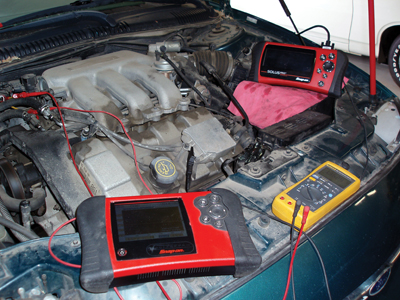 In lieu of intellectual curiosity, we have the “silver- ullet” approach, which is concerned more with short-term fixes than with long-term learning. The typical silver-bullet approach might say that an inoperative cruise control can be repaired on some vehicles by replacing the oxygen sensor. The tech with the silver-bullet approach is satisfied with that answer.
In lieu of intellectual curiosity, we have the “silver- ullet” approach, which is concerned more with short-term fixes than with long-term learning. The typical silver-bullet approach might say that an inoperative cruise control can be repaired on some vehicles by replacing the oxygen sensor. The tech with the silver-bullet approach is satisfied with that answer.
But the tech with intellectual curiosity wants to know why the oxygen sensor makes the cruise control fail. The short answer might be that the PCM is programmed to disable the cruise control if the oxygen sensor fails. The long answer might be that the auto manufacturer knows that car owners might be more willing to pay for repairing their cruise controls than for replacing oxygen sensors.
Information Imprints
Instant recall of technical information is an essential survival skill for any tech. I mentioned under “Preparatory Set” about how important note taking is to the learning process. As I said, note taking requires a tech to be mentally and physically engaged with the subject matter. The fact that the tech is physically engaged with recording information causes the information to be imprinted into his memory.
But note taking isn’t necessarily a neat, orderly process. Most notes are written in the margins of text handouts or book pages and are a series of abbreviated words and phrases. Notes written in notebooks are more organized, but usually need re-organizing at the end of the day, which is why ring-binder notebooks have replaceable pages.
Many years ago, I taught a diesel maintenance class to students working in our local mining industry. These adult students were short on study time and study skills, but they needed this information to do their jobs.
When I did the lecture portion of the class, I wrote my class notes on the black board and instructed the students to copy these notes into their notebooks. Many students didn’t realize it at the time, but these notes were actually the answers for the next quiz. With that information imprinted in their minds by the simple act of copying the notes by hand, my students did very well on the written tests and on practical shop work.
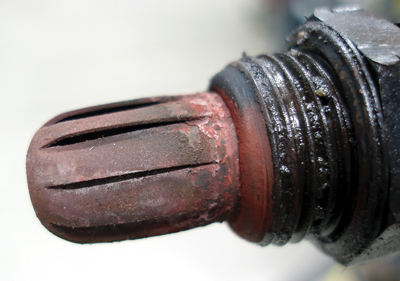 I’m not thrilled about students typing notes into a laptop computer because, at least in my opinion, the physical act of writing notes by hand concentrates your attention on the material you’re trying to learn. Keep in mind that notes don’t have to be neat. Good spelling is optional and abbreviations are the norm. If you really want to learn, re-write and reorganize those notes the next day and you’ll have the information down pat.
I’m not thrilled about students typing notes into a laptop computer because, at least in my opinion, the physical act of writing notes by hand concentrates your attention on the material you’re trying to learn. Keep in mind that notes don’t have to be neat. Good spelling is optional and abbreviations are the norm. If you really want to learn, re-write and reorganize those notes the next day and you’ll have the information down pat.
Mental Map Building
Nothing can be worse than picking your way sentence-by-sentence through a jungle of dense technical material. Once you’re caught inside this jungle of information, north, south, east and west all begin to look the same and you become hopelessly confused.
To survive the Information Jungle, build a map in your mind by first thumbing through the material and studying the photos, illustrations and section headings. If nothing else, study the index of contents to see how the material is organized. Or slowly read the introductory paragraph to see if the first few sentences of each paragraph contain a thesis statement that explains the relation of that paragraph to the whole. If a summary of material is contained at the end of a section or chapter, read it first. When you see the big picture, you will now have a reliable map that will successfully guide you through the Information Jungle.
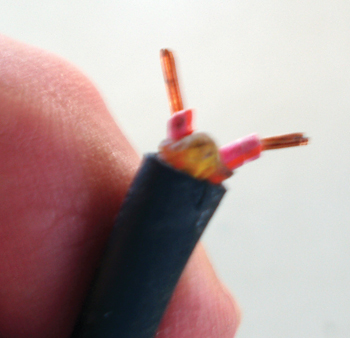 Intuitive Versus Analytical
Intuitive Versus Analytical
Before we get too far into the psychology of diagnostics, let’s look at the difference between an intuitive and an analytical approach to diagnostics. Both are essential survival skills and both operate differently. The intuitive approach is basically your subconscious mind speaking to you from past experience.
This winter, I had a 1993 full-size Chevy truck that would idle cold but not hot. My client shop had advanced the ignition timing by at least 10° to make the engine run well enough to get to my shop. Because the idle and poor performance complaint was a no-code condition, my intuitive “guess” was that the ECM itself was operating in a limp-in mode, which reduces spark timing and fuel control to default values.
In any case, the diagnosis wasn’t that simple because the somewhat erratic voltage values taken from the single-wire oxygen sensor indicated that the air/fuel ratio was nearly normal. But, on a strictly analytical basis, adding fuel would cause the engine to stall and removing the brake booster vacuum hose would allow the engine to idle much better. Both tests indicated an over-rich fuel mixture.
Putting two and two together, I began to theorize that the ECM could no longer maintain fuel control because the oxygen sensor was driving the ECM to add more fuel than it actually needed.
To confirm my theory, the engine idled perfectly when I disconnected the oxygen sensor. I also noticed that the engine ran equally well when I disconnected the electronic spark timing (EST) wire or placed the engine in the fuel backup operating mode with a scan tool. What I was doing, of course, was placing the engine in an open-loop mode in which the oxygen sensor had no influence on fuel control.
Upon inspection, I found that the engine had the original oxygen sensor, which I actually had to heat nearly red-hot to remove from the exhaust manifold. After replacing the oxygen sensor, some driving time was required for the ECM to relearn the fuel control. In this very rare case, a lean-biased oxygen sensor was causing a no-code fuel control problem that mimicked a limp-in mode operating condition. The lesson learned is that, while any good tech can develop an excellent intuitive approach, he also needs some hard analytical data to accurately diagnose the occasional, never-before-seen technical problem.
The Strategic Thinker
Because it’s not unusual for a diagnostic tech to be confronted by reams of information contained in repair manuals, technical service bulletins, anecdotal information and hotline repair archives, it’s important to reduce the information overload by becoming a “strategic thinker.”
One of the survival strategies I learned from many years ago is to gather information on vehicles I’m not familiar with by accessing archival information contained in some technical hotline sources.
When matched with the current diagnostic trouble codes and symptoms, archival information can provide an overview of failure patterns, diagnostic techniques and repair procedures. Archival information is far from perfect, but it is always a good place to start when forming a diagnostic strategy for an unfamiliar vehicle or operating system.
Some electronic repair manuals now include strategy-based diagnostics that include summarizing how a system works and how that information can be used to form a diagnostic strategy. Obviously, understanding how a system works forms the major part of any diagnostic process. One thing is for certain: if you don’t develop a strategic approach, you’re probably going to waste a lot of time dealing with the new and unfamiliar.
The Reasoned Approach
I’ve always maintained that a good diagnostic strategy is driven by the reasoning process and an understanding of probabilities. As we all know, many inexperienced mechanics often attribute an unexplained electronic failure to a “bad” computer or sensor. What’s lacking here using a reasoned approach as a survival skill.
To illustrate, experience might tell us that failures in modern OBD II PCMs are relatively rare. Once in a while, a fuel injector driver in the PCM might fail, but it’s seldom that the PCM itself fails unless it’s been submerged in floodwater or has been exposed to extremely high battery circuit voltage.
Because the probability that a PCM has failed is relatively low, the reasoned approach begins with checking the battery and key-on powers and the redundant grounds needed for the correct operation of the PCM. With a positive confirmation of that data, the next step in a reasoned approach would be to make sure that a shorted sensor isn’t drawing down the 5- or 8-volt reference signals produced by the PCM.
A good example of the reasoned approach is a former teaching friend of mine calling about his son’s 1998 Jeep Grand Cherokee that had a cranking, no-start condition and a non-functioning instrument cluster. While not trained in automotive electronics, my former associate discovered that when he disconnected the crankshaft position sensor (CKP), the instrument cluster would return to normal operation.
The “mysterious” relationship between the CKP sensor and instrument cluster prompted me to theorize that the CKP was shorting the reference voltage in the PCM, which, in turn, was causing a loss of data to the instrument cluster. Because CKP failures are common on this vehicle and because of the relationship between the CKP and the instrument cluster, I recommended changing the CKP because it was the likeliest cause of the cranking, no-start complaint.
Had I been on-site with my test equipment, my analysis of the problem would begin by checking the reference voltage at the PCM. But, with a new CKP installed, reasoning won the day because the engine started immediately and the instrument cluster worked perfectly. In this case, putting together two seemingly isolated bits of information to arrive at a successful conclusion is an essential survival skill.
The Diagnostic Tail Gunner
We survive by teaching ourselves to deal with an uncertain future, as much as the tail gunner on a World War II bomber did by teaching himself to keep a watchful eye and take careful aim. Keeping pace with modern vehicle technology requires the same type of survival skills. Learning how to learn, learning how to process volumes of data, and learning how to solve complex problems is all part and parcel of becoming a modern Diagnostic Tail Gunner. s












